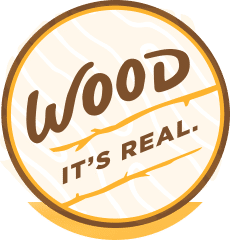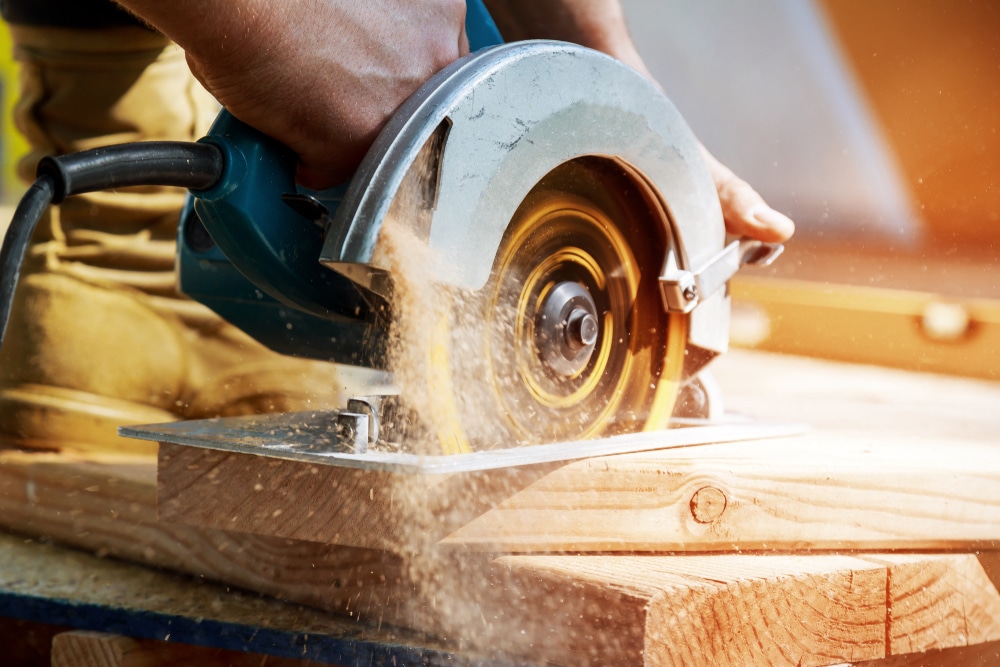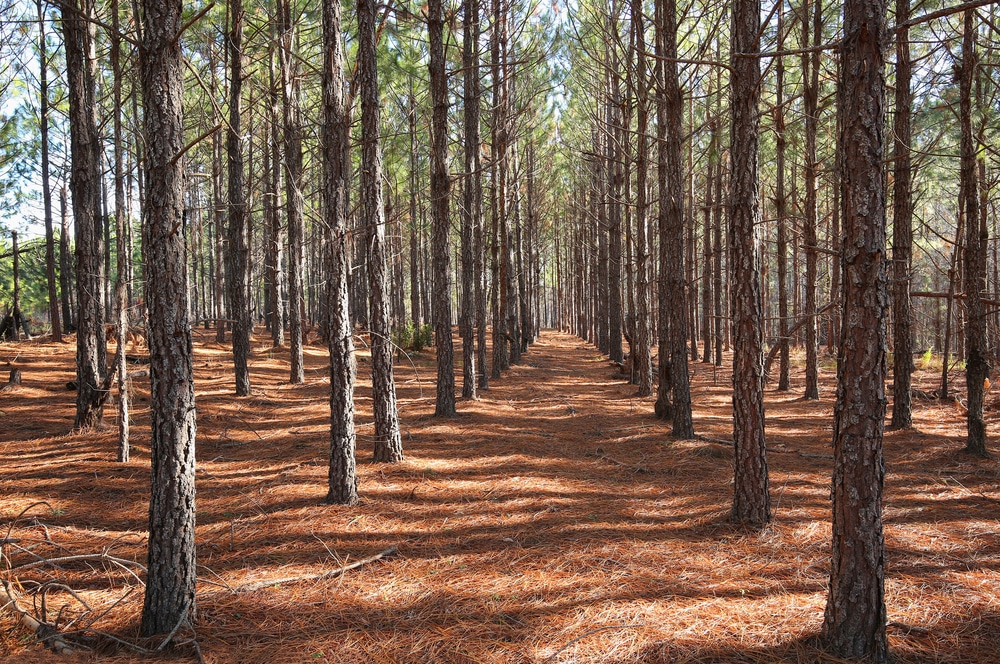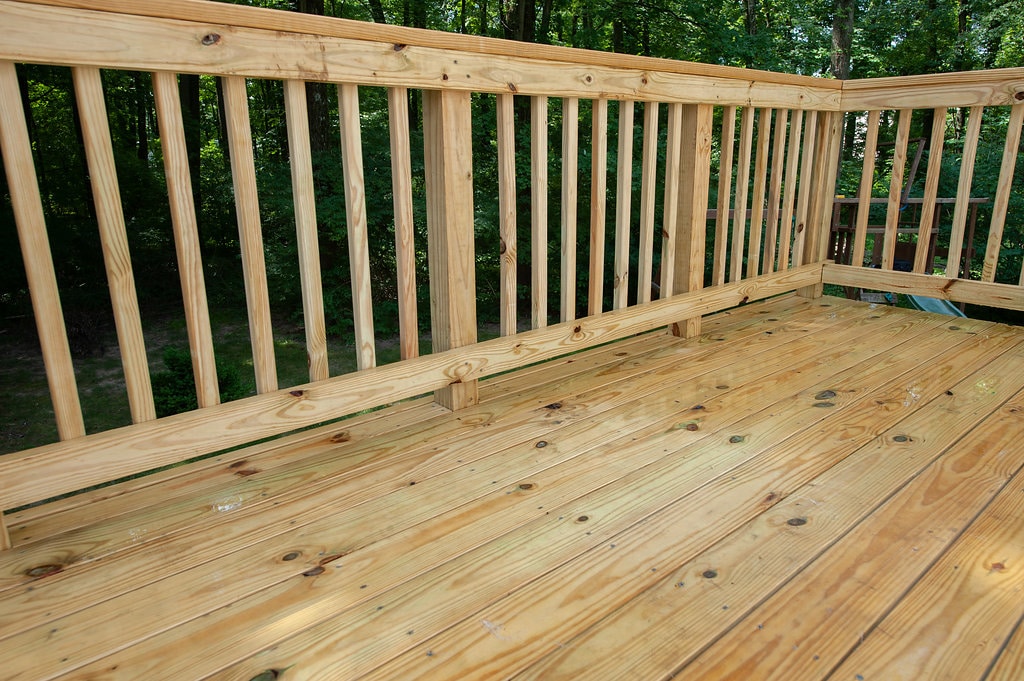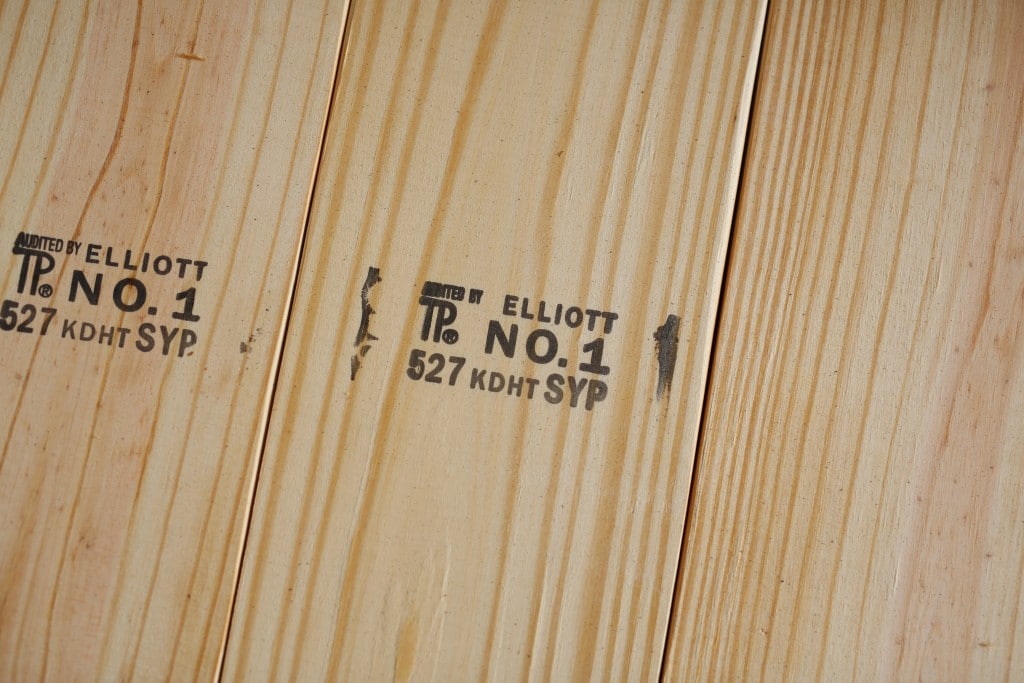
Reading a lumber stamp is kind of like reading the ingredients label on the food you eat. There’s a lot of information – what’s in the product, which body certified it, and – if you know how to decipher the label – how you can use it. The lumber industry goes to great lengths to make sure consumers and commercial builders understand exactly what they’re buying from the big box store or lumber yard by putting this info on each piece that heads out the door. More importantly, on each piece of lumber, they’ll learn critical information to make sure the material is the exact right fit for the job.
On the Stamp
Species, grade, moisture content, certification mark, and mill are the five things you’ll see on a lumber stamp. The folks over at This Old House did a fantastic job breaking down these five items so we encourage you to look at that article.
Let’s talk about just a few of these elements.
Species
We’re all about the use of Southern Yellow Pine for projects big (really big) and small. Poke around on the site and find out all the reasons why it’s awesome.
First, here’s how you can tell your piece of lumber is Southern Yellow Pine.
In the infographic below, you see how it’s very clear to tell if your lumber is Southern Yellow Pine. You’ll see either the letters “SYP” on the piece or the letters “SPIB” on it. It’s that simple. If you have questions, please ask someone working the aisle or the yard.
Mill Number
We’re lumber nerds here, of course. And when we see a piece of Southern Yellow Pine, we love looking up which mill made that lumber. It’s fascinating to see where these mills are located and to understand the jobs and people these mills support – and that you support by buying the product. For example, you could see that “stick” of Southern Yellow Pine was made by mills that have been run by the same family for generations in places like Ripley, MS or Bristol, FL. Every mill has a story.
Here are a few tips to help look up a mill’s location to see where your lumber was made.:
- Some mills put their family name right on the stamp because these families are proud to put their name on every product. Often times, you can just Google the name along with “Sawmill” and you’ll find the mill.
- The inspection bureaus’ websites are the best way to match up lumber with a mill. For example:
- If the stamp says “SPIB” on it, go here and input the mill number.
- If the stamp says “TP” on it, go here and find the mill number.
PT and GC
Sometimes, if the lumber has been pressure treated for outdoor use, you’ll see the letters “PT” or “GC” either on the stamp or on the shelf. PT means Pressure Treated.
PT lands in two basic camps: Ground Contact and Above Ground. Some retailers sell only Ground Contact lumber if the lumber is pressure treated. Others sell both. It’s important you use the correct treatment for your build. There are a number of factors to consider depending on your project– we recommend reading this article to find out what’s right.
The lumber industry goes through massive efforts to make sure what’s in the store or lumber yard meets your needs. Find out where you can buy SYP here.
